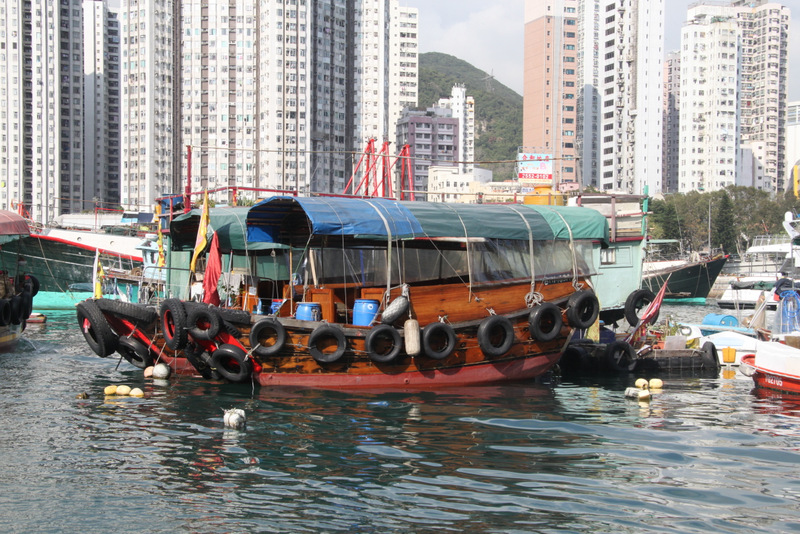 |
| View of Hong Kong from Victoria Peak |
 |
The Japanese used this lion for target practice during their occupation of Hong Kong. The bullet holes are evident. It is now a symbol of Hong Kong's freedom.
|
  |


Hong Kong became a colony of the British Empire in 1842 after the First Opium War. It was occupied by Japan during the Pacific War. The British had control until 1997, when China resumed sovereignty. The citizens of Hong Kong are guaranteed the same rights and privileges as before the transition (1997) for 50 years, with 34 to go. Then Hong Kong by law becomes completely integrated into China.
Entities in existence before the transition are guaranteed for the 50 year period. Perhaps that is why our church was so anxious to have the Hong Kong Temple in operation before the transition in 1997. The LDS church owned a wonderful historic mansion that the city was desirous to reclaim. The church traded the mansion for a piece of prime real estate on Hong Kong Island. It is now the site of church offices, missionary apartments, meeting house for several HK wards and branches. The Hong Kong Temple, in Kowloon is also the location of the mission home with a LDS stake center and distribution center across the street. LDS missionaries do serve in Hong Kong speaking Cantonese, a completely different language than Mandarin. (The written Mandarin and Cantonese, however, are the same.)
 |
| Hong Kong LDS Temple in Kowloon |
 |
| LDS Office/meeting house on HK Island |
 |
| This picture of Chirst with Asian children reminds us that he loves us all equally. |
 |
| The queue to enter Chanel |
We were surprised to see the amount of raw land outside the city. Boy Scouting is popular in Hong Kong. We even discovered a Gilwell Camp in the area. You Wood Badgers will know the significance of that. I was able to mingle with HK scouters having a camp out. They had their closing ceremony on Gilwell Field. The city is also the home of an International Baden Powell Hostel and Scout Training Center. I had to buy some patches!
 |
| Hong Kong Scouts on Gilwell Field. Notice the Ax and Log! |
 |
| Hong Kong skyline at night |
 |
| The queue in the Apple Store |

 |
| Some kayak time on the coast |
  |
| Best Dressed Panda and a Banyan tree |
Macau is Hong Kong’s Portuguese cousin. All of the items regarding Hong Kong’s status apply to Macau. (Passports, money, freedoms, etc.) It is a 90 minute high speed ferry ride to the other side of the Pearl River Delta. Macau was administered by Portugal from the 1550s until 1999, when it was ceded to China. It is known for its casinos and the Macau Grand Prix. We enjoyed the lights of a city that never sleeps, the water shows and the extravaganzas. But one quick walk through a smoke-filled casino was enough.



 We enjoyed the European architecture of the city. It was like a taste of
Europe in Asia. The buildings were pink, yellow and green. They were covered in
tiles; the windows had graceful arches and flower boxes. There was BREAD!
(Bread is not a big thing in China). We could usually figure out what the signs
said in Portuguese. At least we recognized the alphabet!
We enjoyed the European architecture of the city. It was like a taste of
Europe in Asia. The buildings were pink, yellow and green. They were covered in
tiles; the windows had graceful arches and flower boxes. There was BREAD!
(Bread is not a big thing in China). We could usually figure out what the signs
said in Portuguese. At least we recognized the alphabet!
 |
| Mammoth tusk carved to show the Monkey King |
 That’s me by Michael Schumacher’s set of wheels. We
took a stroll along the Grand Prix route. I tried to imagine driving my Viggen
at top speed through the course. At night I dream of driving just about
anything because since last Sept 5, I have not been behind the wheel of a
vehicle. What a way to end the vacation.
That’s me by Michael Schumacher’s set of wheels. We
took a stroll along the Grand Prix route. I tried to imagine driving my Viggen
at top speed through the course. At night I dream of driving just about
anything because since last Sept 5, I have not been behind the wheel of a
vehicle. What a way to end the vacation. 

Well, it was time to head back to China and the classroom after a great tour of SE Asia.


Such a great pictures - I was in Hong Kong as a 13 year old coming back from Iran with my family, but I still have wonderful memories. I appreciated the extra information that you shared about the Church there, the Boy Scouts (Chinese Boy Scouts?!), and Macao. You do such a good job with these posts!
ReplyDelete